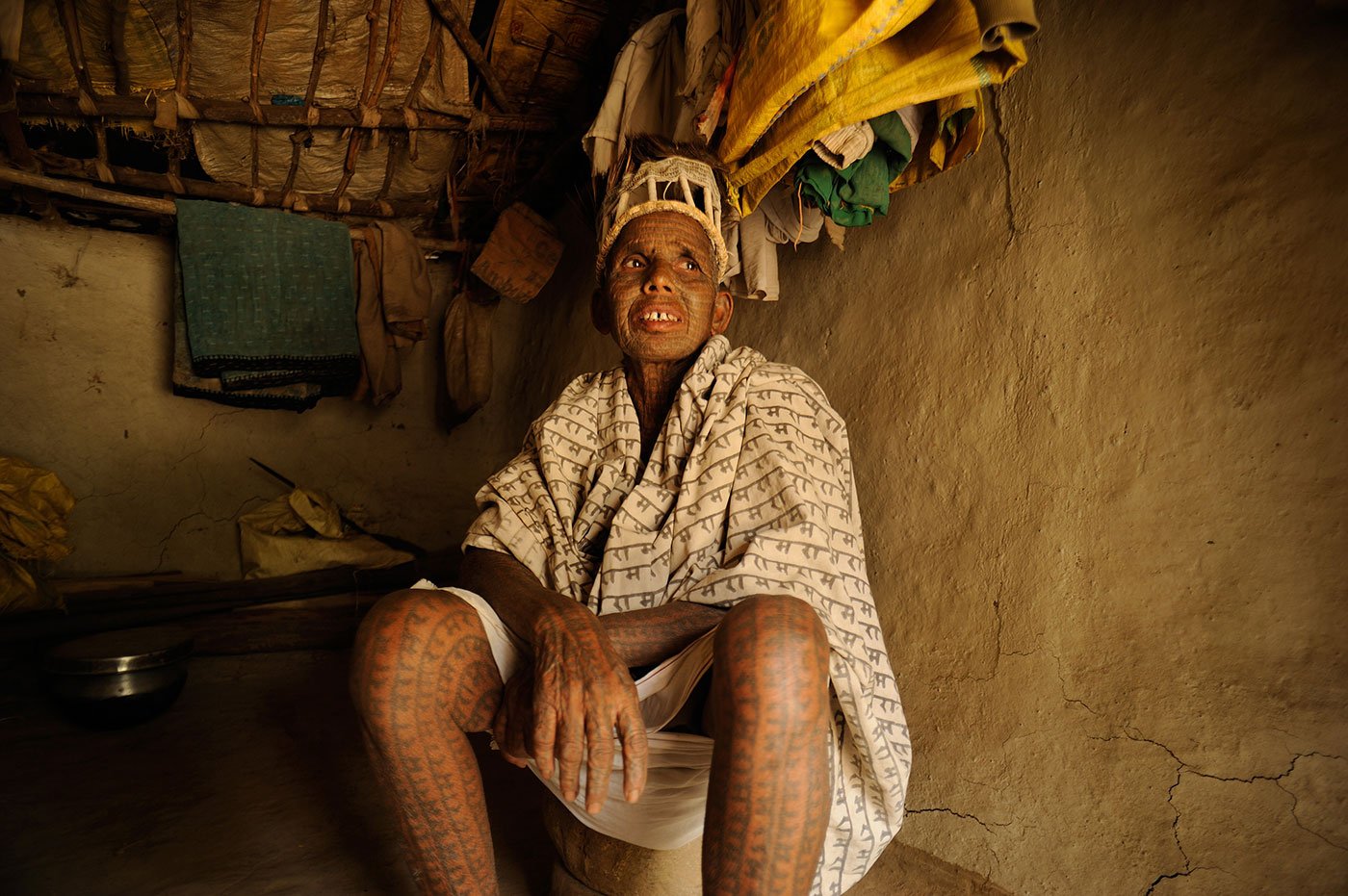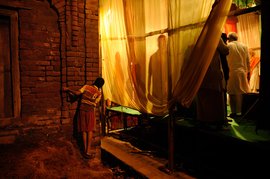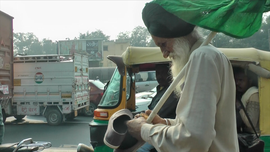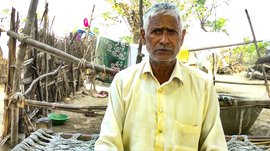“There is no sorrow in this world like poverty,” Mehtr Ram Tandon says, quoting the 16th century poet-saint Tulsidas. Mehtr Ram, of Churela village in Raigarh district of Chhattisgarh, is a Ramnami, originally a group from the Chamar caste who rejected the caste system and adopted a form of bhakti or a devotional path with Ram at its centre.
“We use Ram as our surname, but we may also take on another surname. You will find among us Sharmas, Banerjees, Singhs, Patels and others,” says Chandu Ram of Chapora village in Bilaspur district. “Besides being Chamars, we are also Sreshtis, Baishyas and Baniks. We are each one of these.”
The sect’s adherents mainly live in villages along the Mahanadi river in Raigarh, Janjgir-Champa, Bilaspur and a few other districts; some live in the border villages of Odisha and Maharashtra. (I took the photographs featured here in Chhattisgarh during several visits from April 2015 to August 2017).
The Ramnami are listed as Hindus in official records, so it is difficult to accurately estimate their numbers, but elders believe there are no more than 20,000 Ramnami now, both men and women – usually, they say, that’s how many participate in the annual Bhajan Mela in December-January.
The Ramnami were originally from communities placed low on the caste and occupations ladder among Hindus. In his book Rapt in the Name: The Ramnamis, Ramnam, and Untouchable Religion in Central India (2012; series editor: Wendy Doniger), Ramdas Lamb, associate professor of Religion at the University of Hawaii, Manoa, says that the in the 1820s a group of Chamars (later a scheduled caste), who became Ramnami, abandoned their caste-mandated occupation of disposing animal carcasses and working with hides and leather, and took up farming, pottery and metalwork.
Though the sect is less than a century-old, Lamb writes, the Ramnami are a continuation of the Bhakti tradition of the 15th century mystic poet-saint Kabir, a ‘ naam -centered’ idea of devotion which is open to all irrespective of social status and caste.
Parasuram, a Chamar, is believed to have been the first person to tattoo a single ‘Ram’ on his forehead. He is said to have been born in Charpora village sometime in the 1870s, though there are no written records of this, only anecdotal accounts among the elderly Ramnami. “We took our message not from god but from a man, a common man,” Sadhu Ram of Arjuni village, Raipur district, says of their legendary leader.
What sets the Ramnami apart from the scheduled caste groups they live among is their appearance. Many tattoo the word ‘Ram’ all over their bodies (a practice called ankit karna in the Gondi language), wear a shawl with Ram printed on it and a head-dress of peacock feathers. “Ram is written all over us,” says Pitambar Ram of Pandripani village in Raigarh district. “So, you see, we are the Ramayana .” And the tattoos on their bodies, they believe, are marks left by the Lord.
The Ramnami I spoke to say they have tried to build a community free of caste, class and gender discrimination. Parasuram didn’t appoint an heir and the sect is administered by an elected core committee of men and women.
Those who are tattooed all over – called purnanakshik – are now mostly in their 70s. Their children, who started getting educated in the mid-1970s, have taken up jobs in the cities. They no longer wish to inscribe their bodies out of a fear of ridicule, of being stamped ‘backward’ and of being denied work.
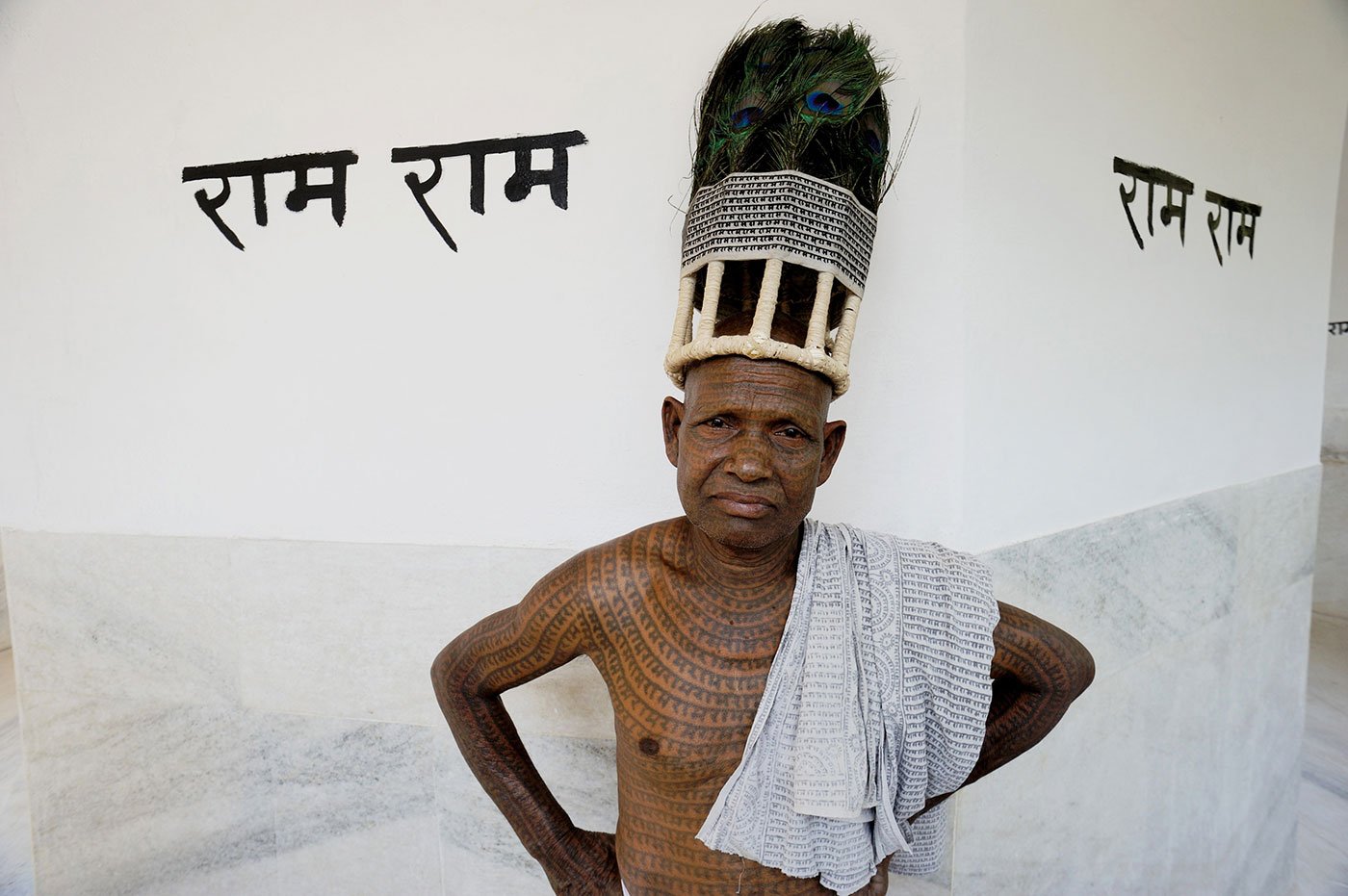
Mehtr Ram Tandon of Churela village, Raigarh district, was a coppersmith who now spends most of his time with his little grandson. Here, he is standing outside a bhajan ghar or prayer hall in Udakakan village. Inside, a copy of Tulsidas’ Ramcharitmanas takes the place of a deity
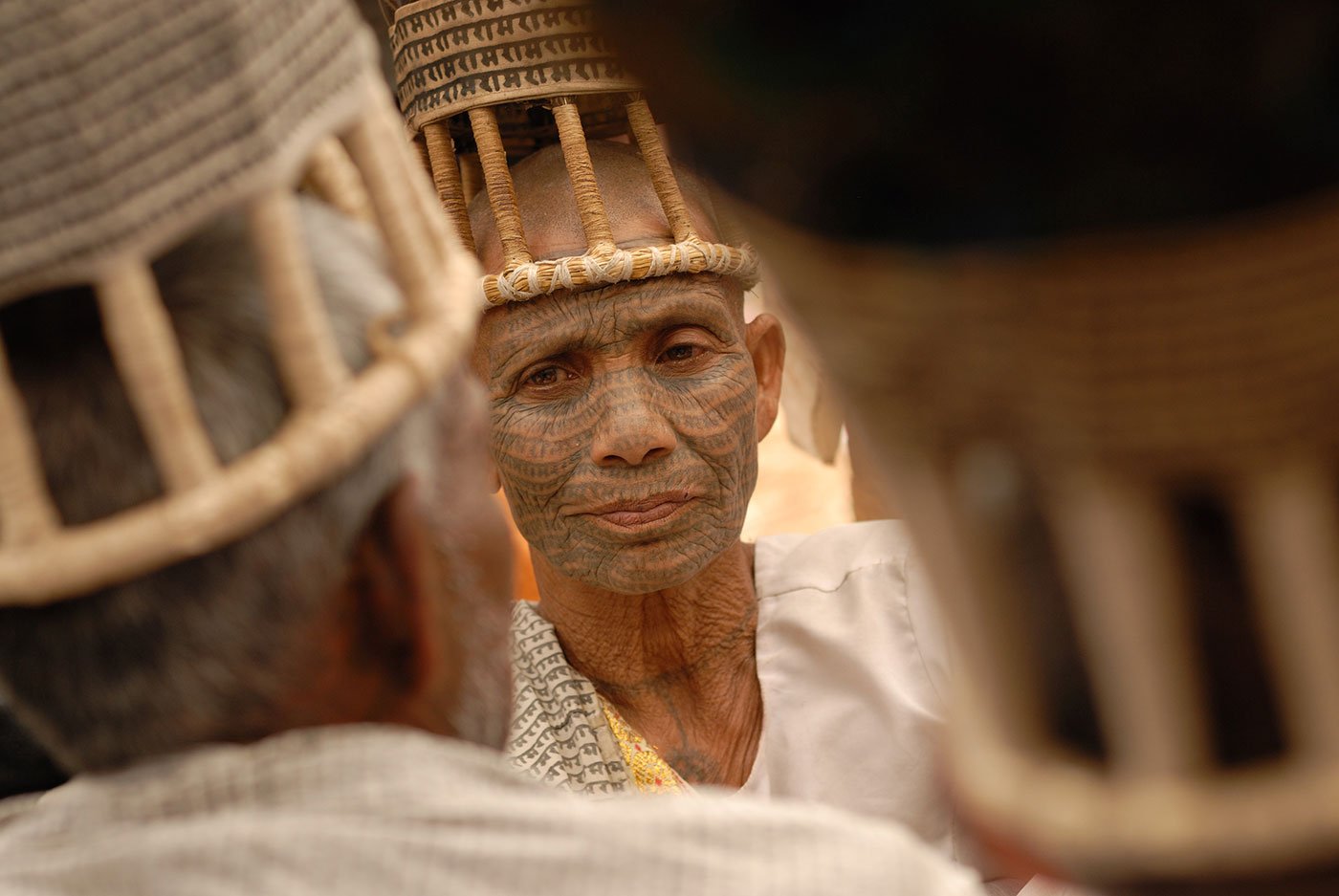
Priya Ram of Chapora village is part of the Ramnami Samaj’s core council; their work, they say, includes care of the destitute, lobbying for government aid and setting up schools. Funds come from donations and government grants
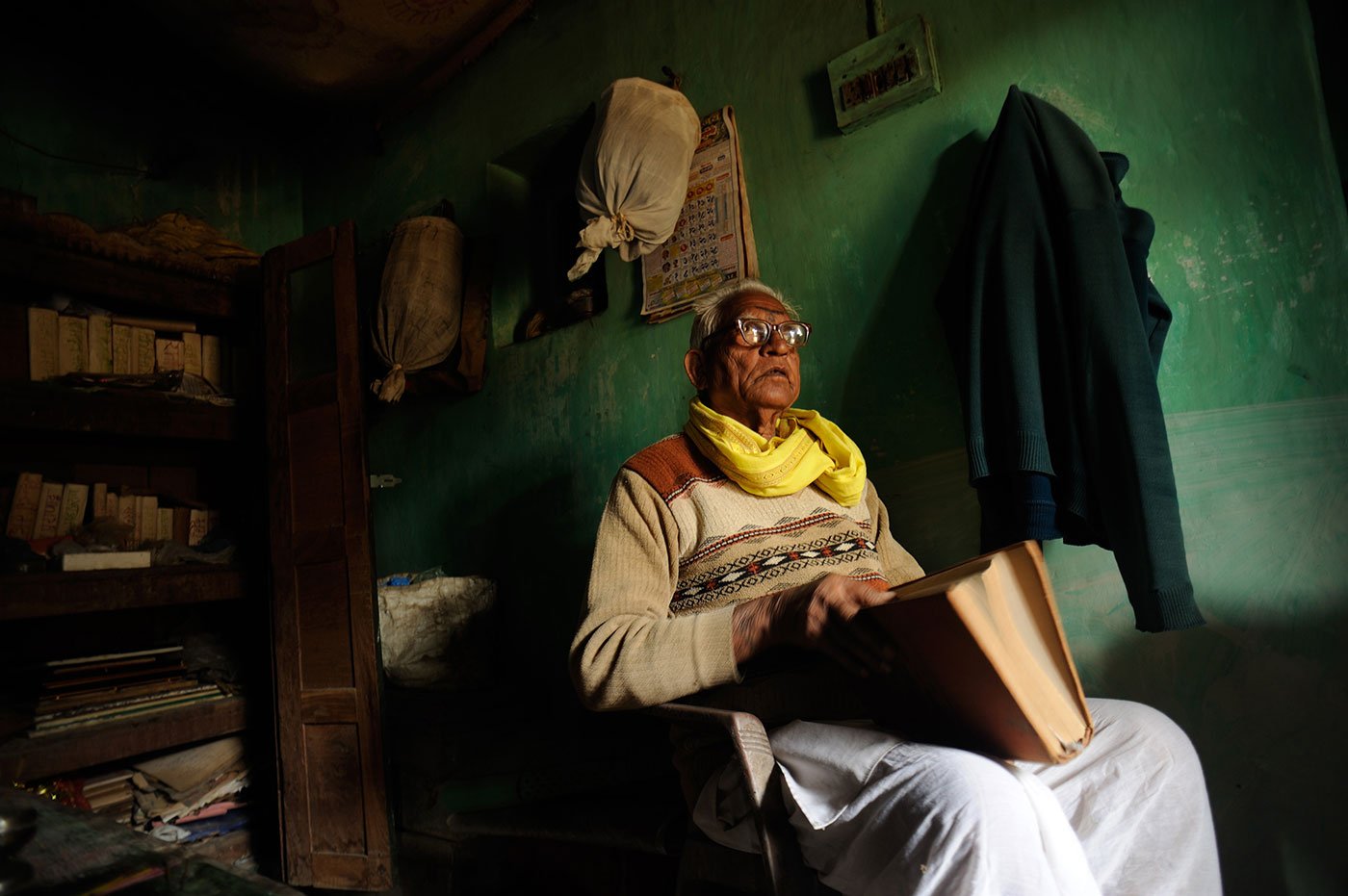
Pandit Ram Das, 90, of Kodava village, never went to school, but he can write in four languages, he says,. He rewrote parts of Tulsidas' Ramcharitmanas, the holy book of the Ramnami, wherever it indicates class and gender inequality
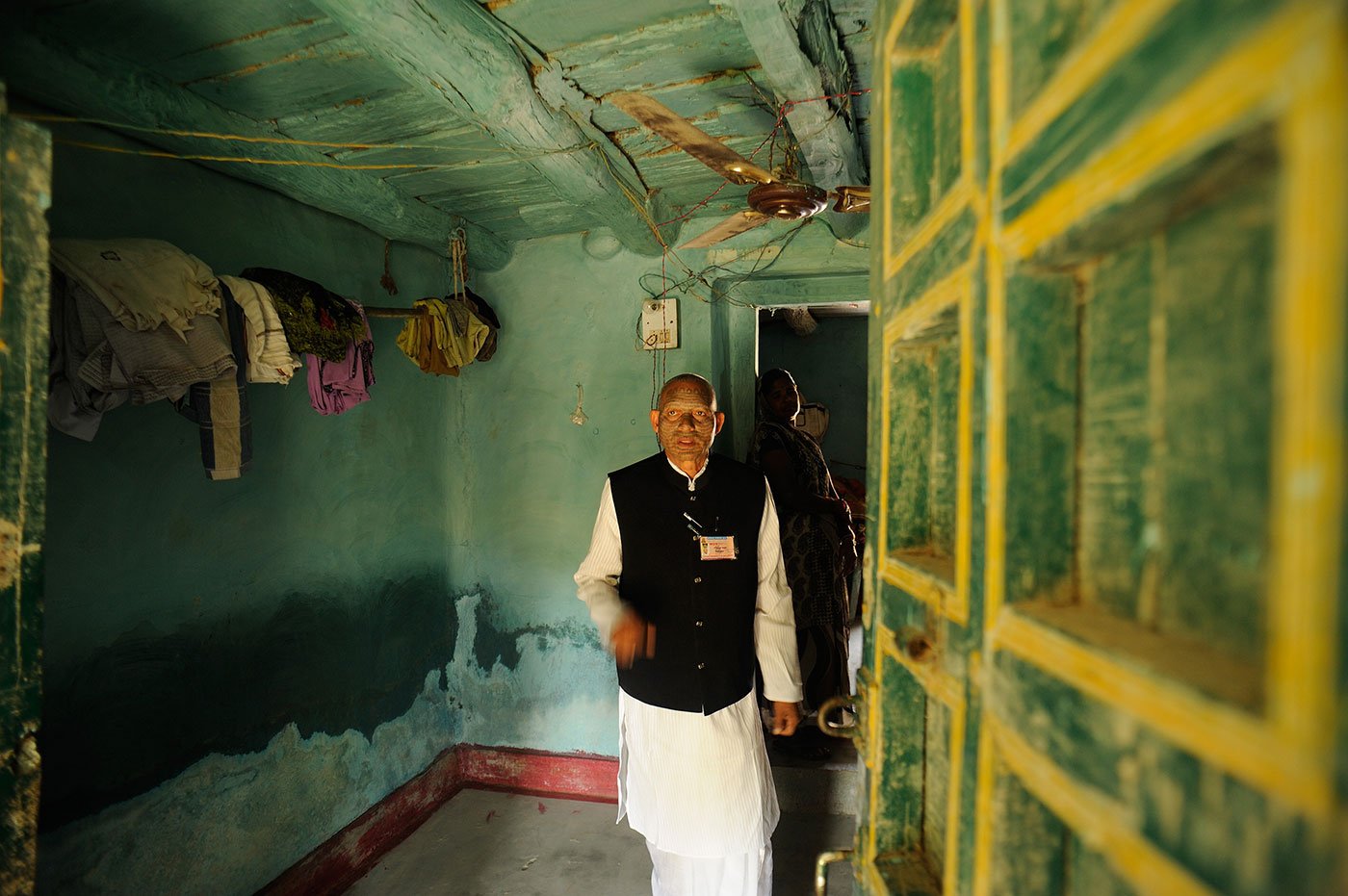
Tirth Ram, of Khapradih village in Janjgir-Champa district, has a college education, and was the sanchalak or director of the Samaj’s council for many years
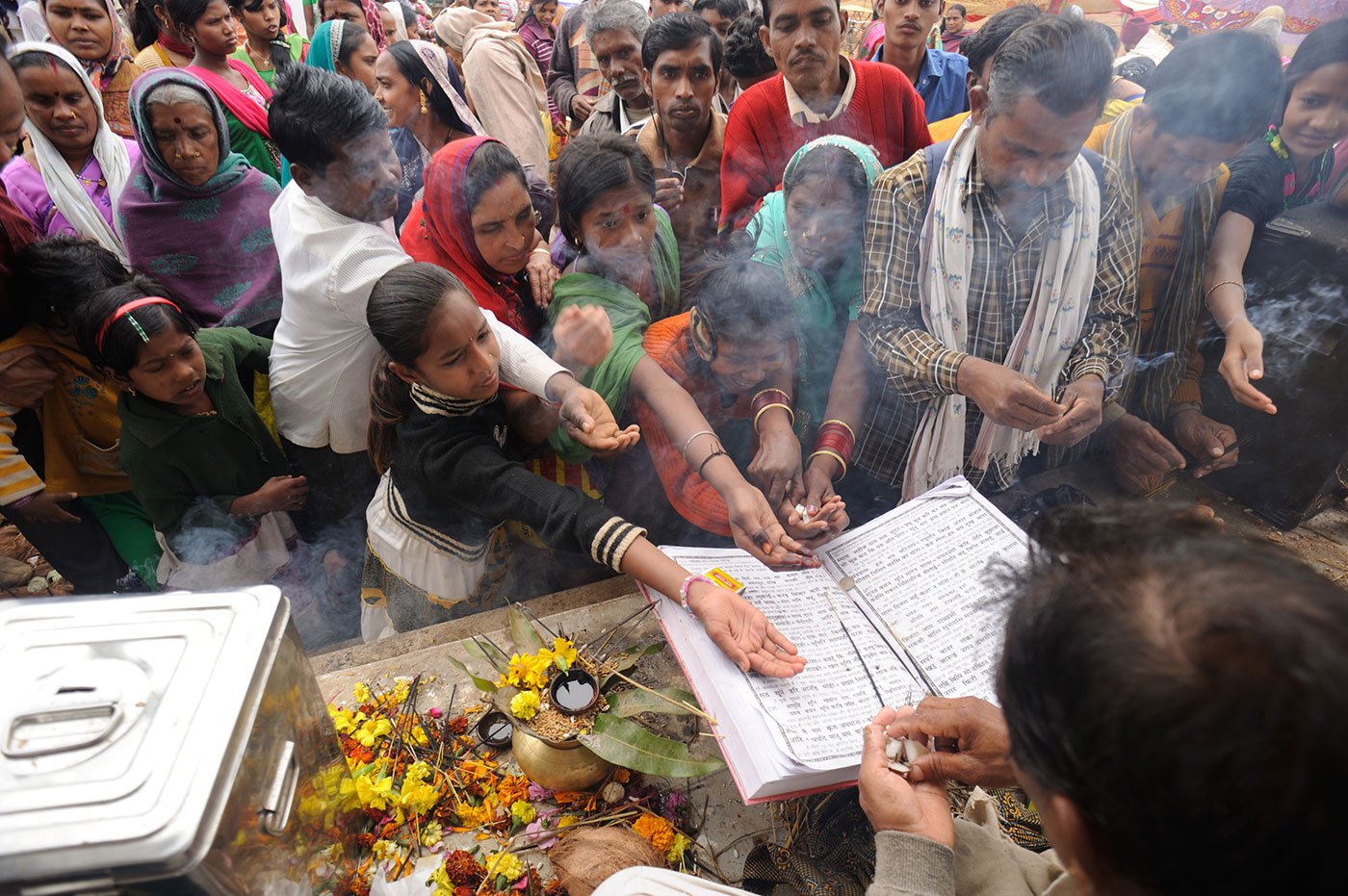
The Ramnami gather for a three-day Bhajan Mela in Sarsiwa village in Raipur district at the end of the harvest season in December-January. They erect a jayostambha (a white pillar with 'Ram' inscribed on it), chant from the Ramcharitmanas all day, and people come to pay their respects to the book
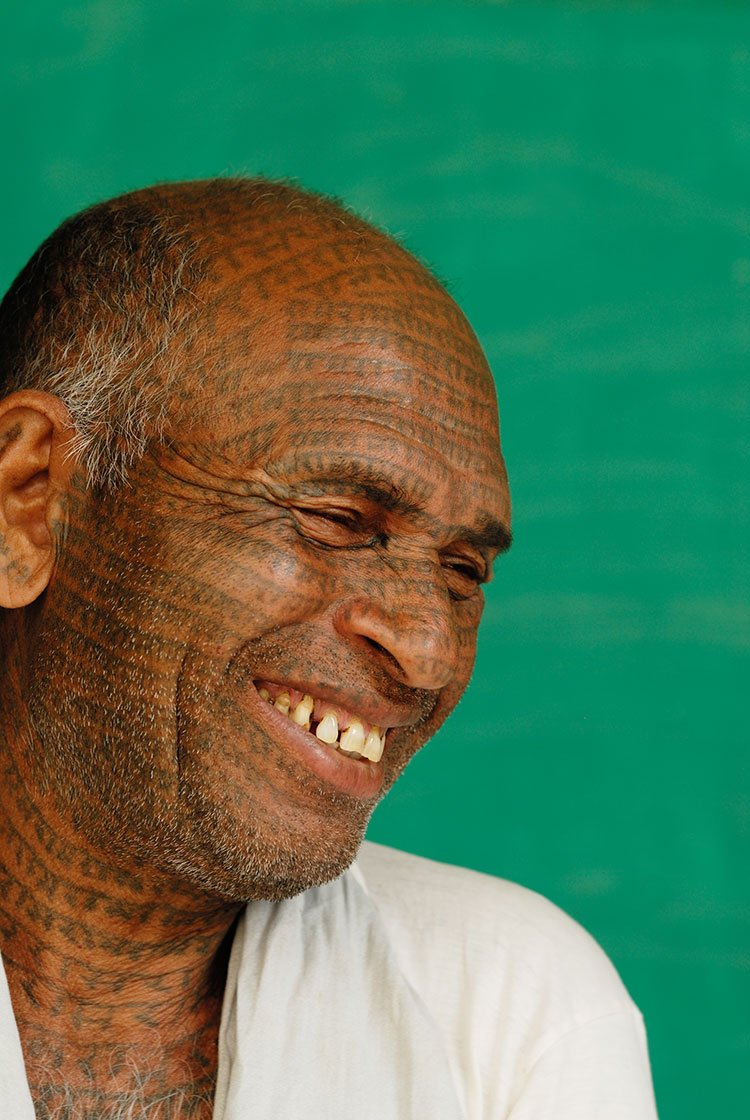
After Awadh Ram’s only son got a job as a school teacher, he turned his home in Churela village of Raigarh district into an informal school and started living in the workshop where he had worked as an ironsmith
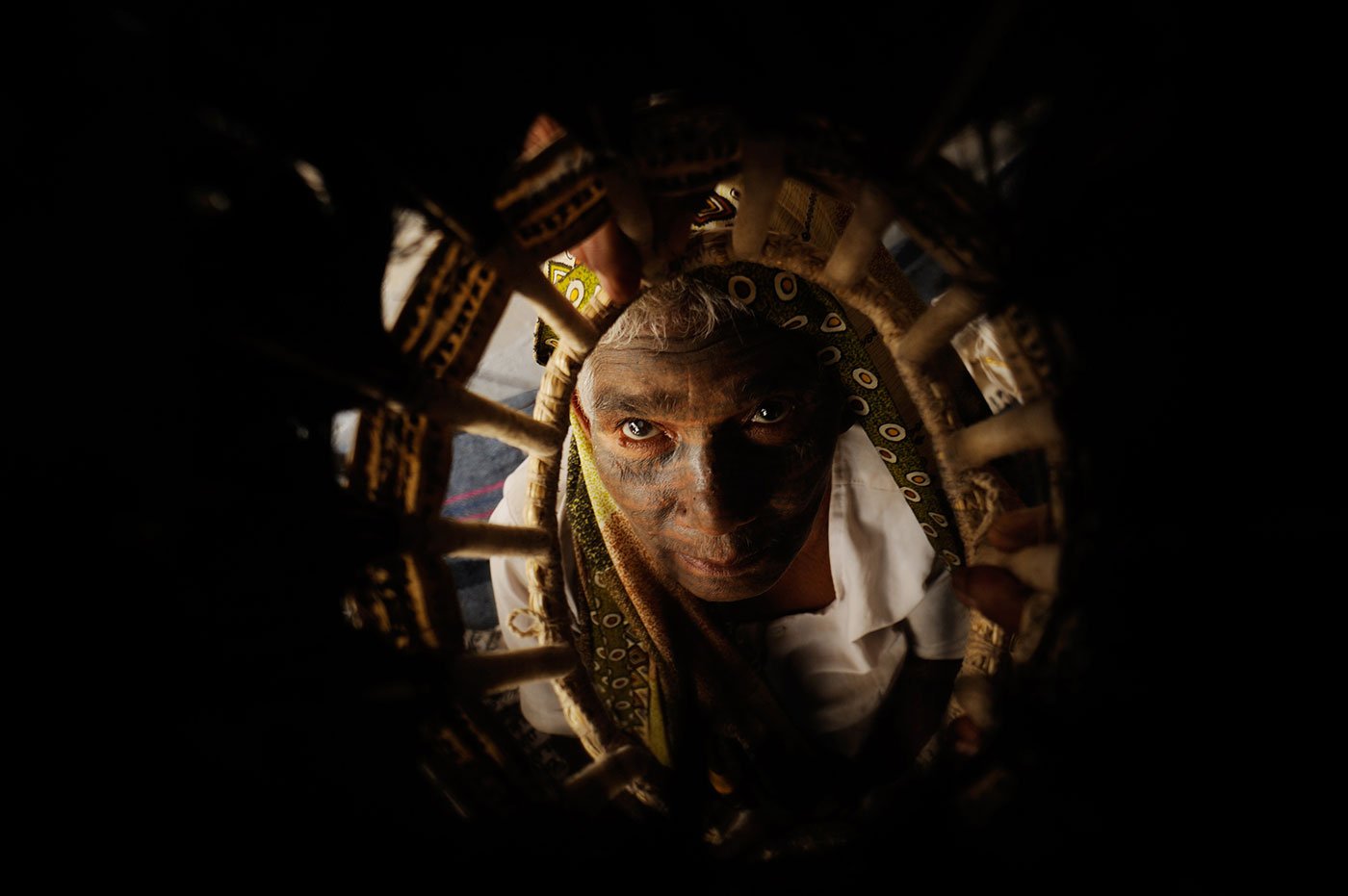
Mukti Ram, a widow who lives in Nawrana, a small village near Bilaigarh village, is a homemaker; her son is a farmer

Sadhu Ram of Arjuni village, Raipur district, went completely blind when he was six. He is a purnanakshik or a Ramnami tattooed all over his body, and says the Samaj has taken care of him all his life
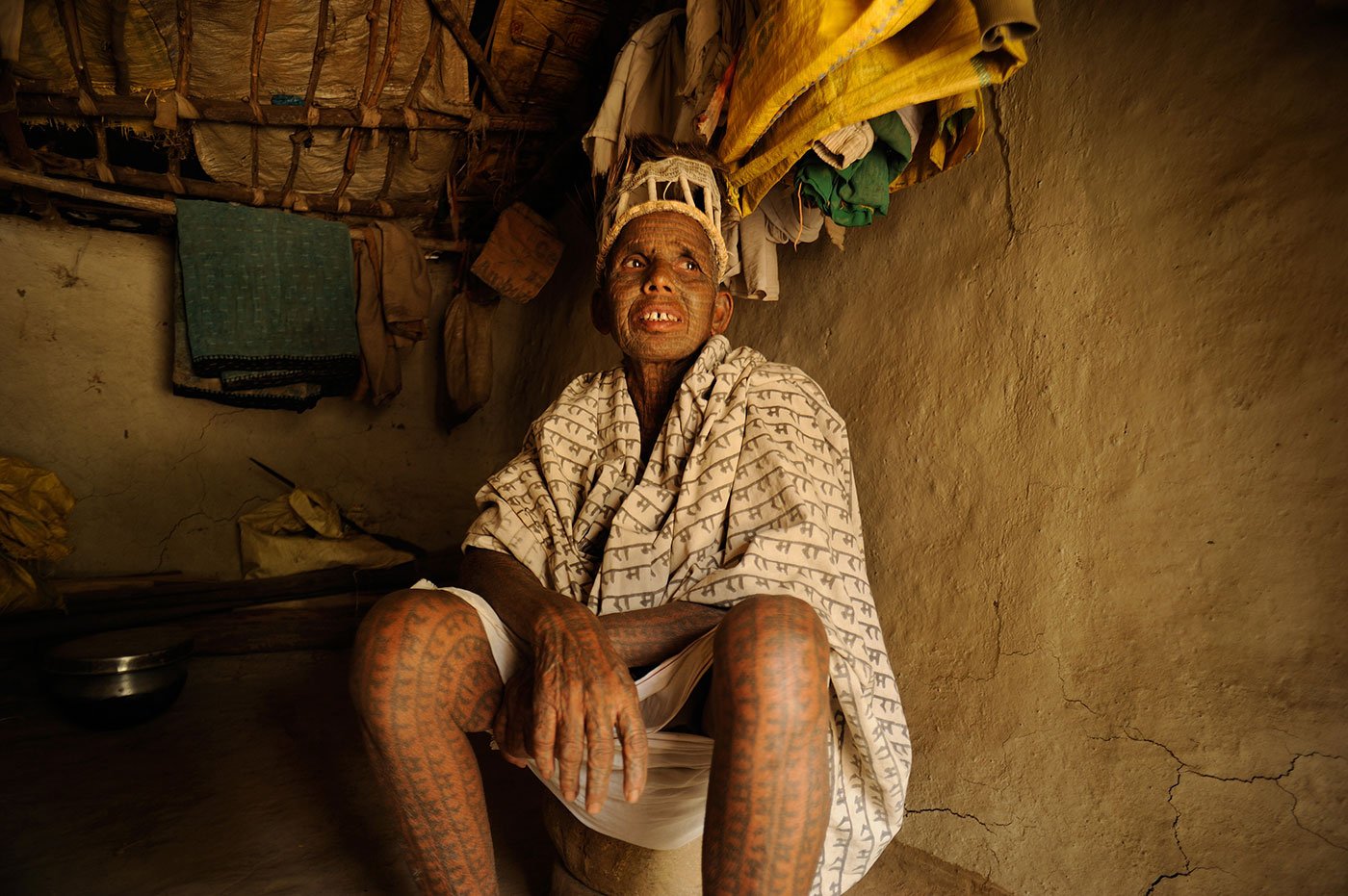
Punia Bai Ram, 90, is the oldest purnanakshik in Gorba village on the Bhatgaon-Champa road. She says her husband, who died 20 years ago, had tattooed ‘Ram’ on her body 1,000 times
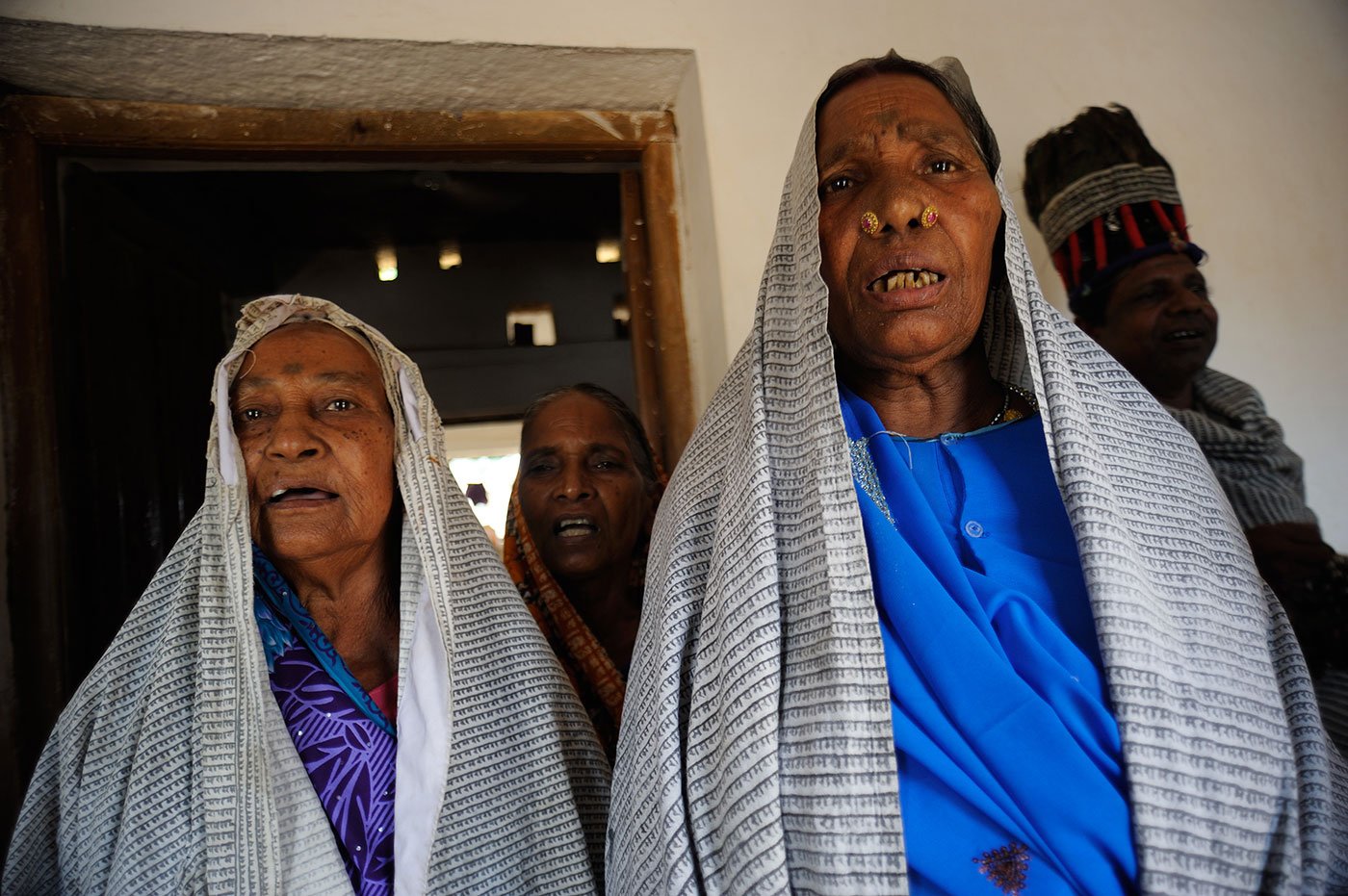
While singing chaupai (quatrain verses) from the Ramcharitmanas , women lead and men follow
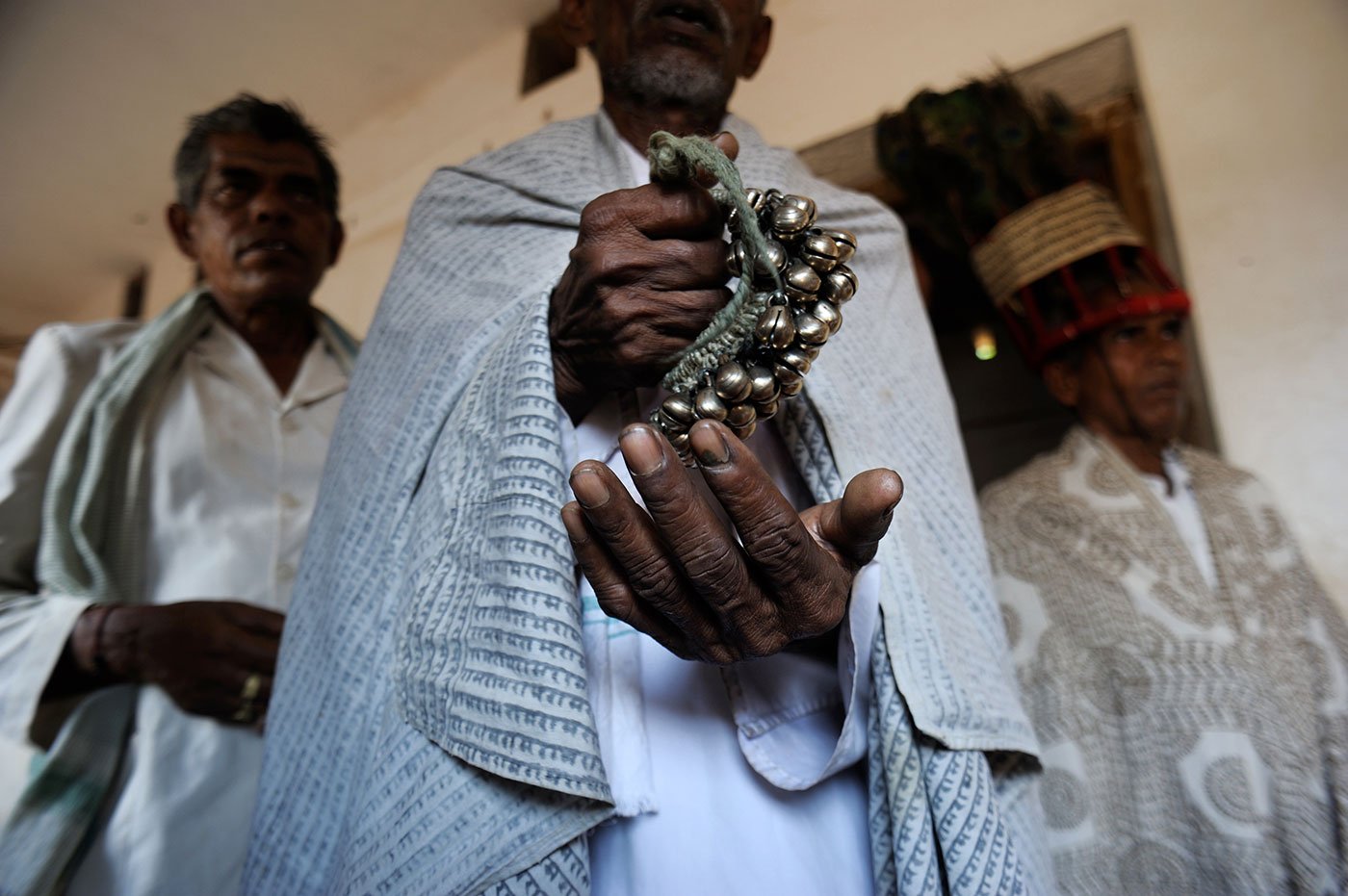
A ghunghru is a clutch of bells used to keep rhythm while the Ramnamis sing chaupai (quatrain verses) from the Ramcharitmanas
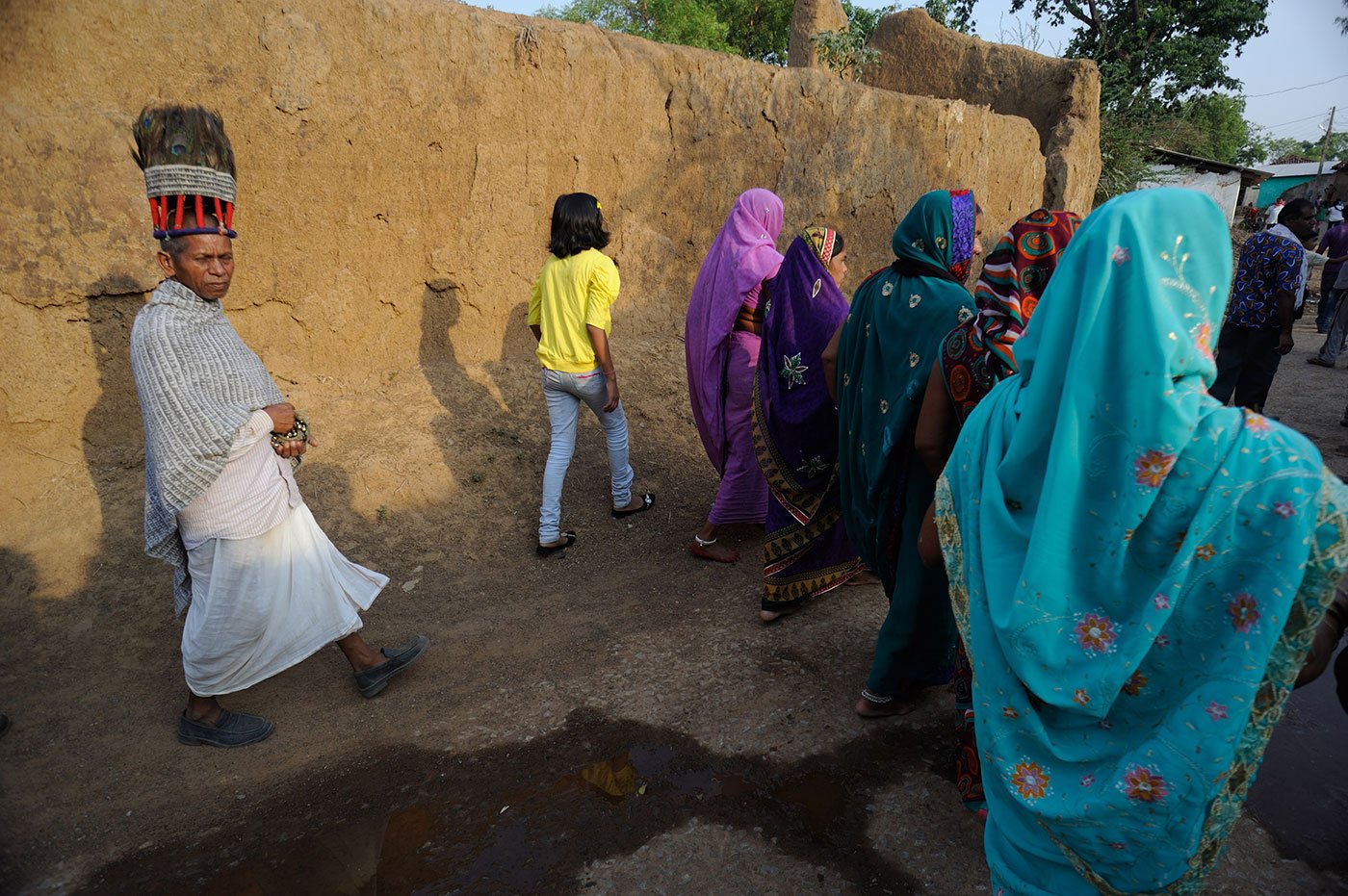
Ramnamis stand out because of their attire – they wear a peacock-feather mukut (head-dress) and an odhani (shawl) with ‘Ram’ printed on it

While older Ramnamis have the word ‘Ram’ tattooed all over their bodies, the young are not getting similarly inscribed
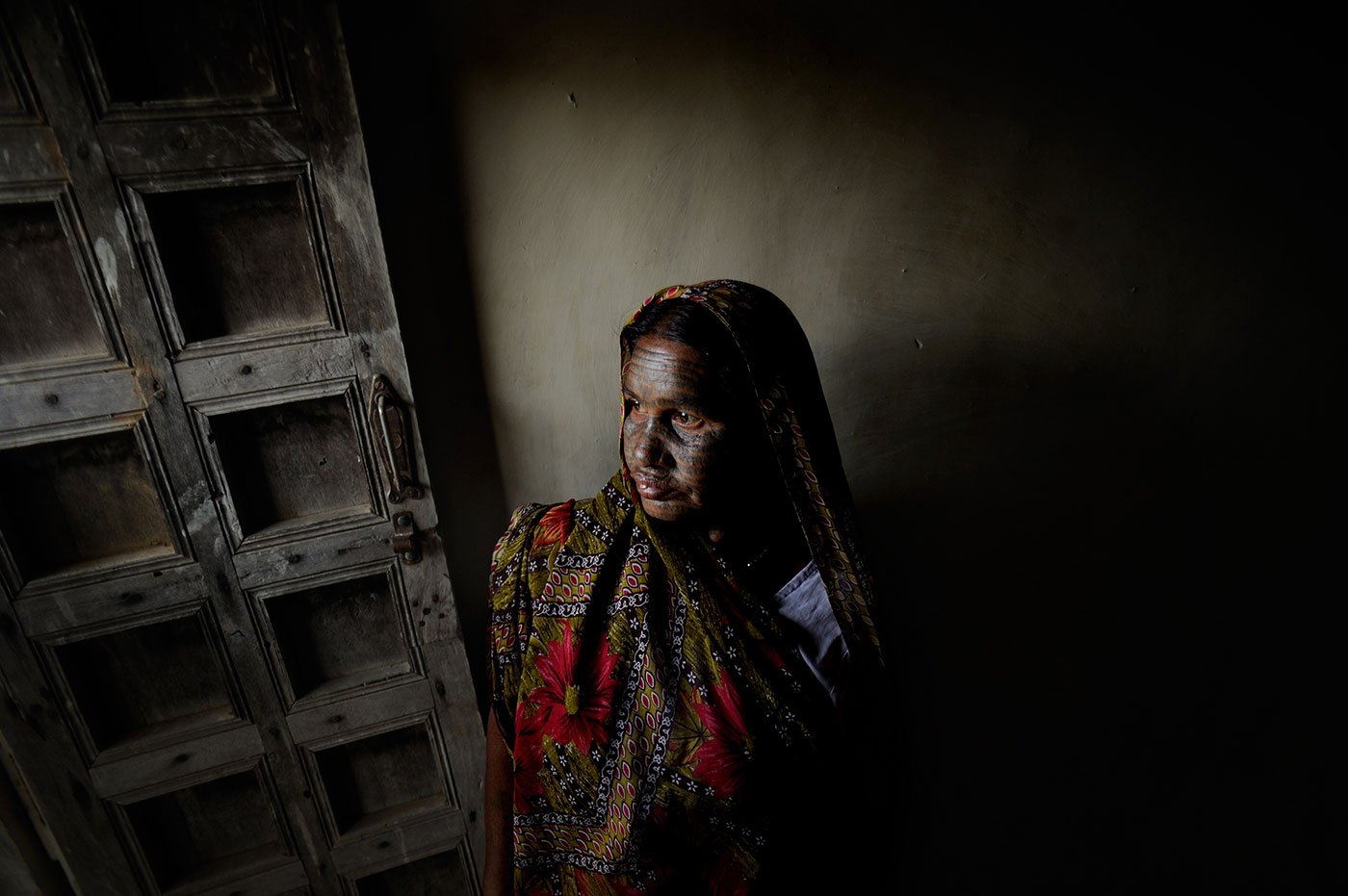
In Khapradih village, Janjgir-Champa district, Tirth Ram’s sister-in-law (name unknown), like several other women in the sect, is outspoken; women lead chants in group songs, and appear to have equal status in the community
The images featured here have also been published on the photographer's website .
